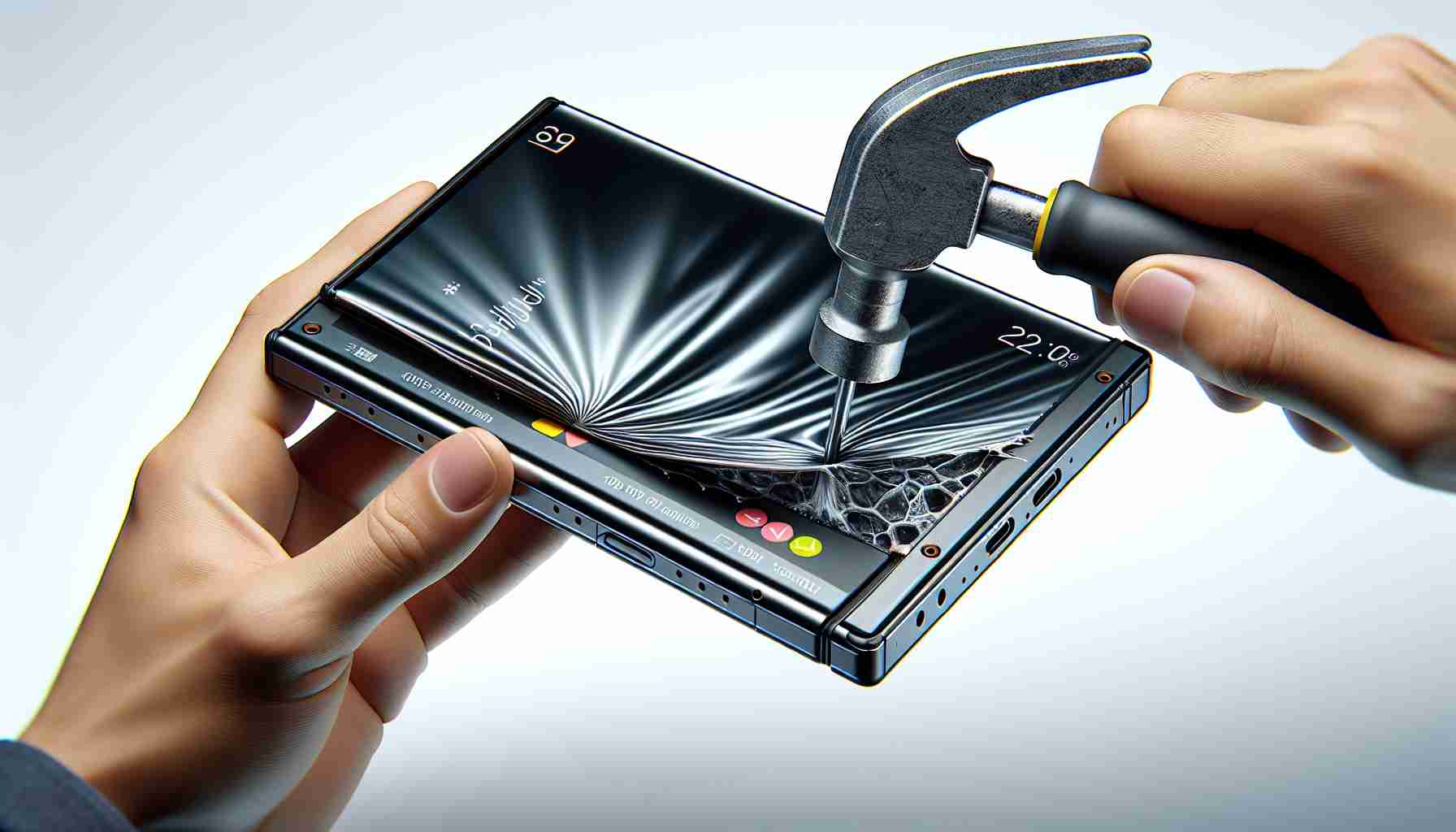Renowned tech reviewer JerryRigEverything has conducted a detailed durability assessment of the Google Pixel 9 Pro Fold, the latest addition to the foldable smartphone market. During the evaluation, two significant vulnerabilities of the device came to light.
First, the internal display of the Pixel 9 Pro Fold has been noted for its susceptibility to scratches. This is a major drawback that plagues many foldable phones, making it essential for users to handle the device with extreme care to avoid damaging the screen.
Secondly, attempts to fold the device inappropriately could lead to serious structural integrity issues. While the device is designed to withstand regular use and typical folding maneuvers, mishandling it can create problems that might compromise its functionality. It’s essential for users to familiarize themselves with the correct folding technique to maximize the longevity of the phone.
The Google Pixel 9 Pro Fold is equipped with impressive specifications, featuring an 8-inch internal OLED display boasting a resolution of 2076 x 2152 pixels and a refresh rate of 120 Hz. Additionally, it sports a 6.24-inch external OLED screen that delivers a resolution of 1080 x 2424 pixels, also with a 120 Hz refresh rate, making it a competitive option in terms of display quality.
Overall, while offering advanced features, cautious usage is vital to maintain the integrity of this foldable smartphone.
Durability Test of the Google Pixel 9 Pro Fold Unveils Important Insights
The Google Pixel 9 Pro Fold has generated significant buzz in the tech community, especially following its rigorous durability test conducted by renowned reviewer JerryRigEverything. While the assessment highlighted critical vulnerabilities, the device’s performance, design, and user experience also presented a mix of strengths and weaknesses worth exploring.
What are the key concerns raised during the durability assessment?
The durability test brought forth several concerns. Beyond the susceptibility of the internal display to scratches and the potential for structural integrity issues from improper folding, other notable aspects emerged. The hinges of the Pixel 9 Pro Fold, integral to its foldable design, were noted for their stiffness, which might impact the ease of use for some users. Additionally, the back cover was found to gather fingerprints easily, which detracts from the overall aesthetic and user experience.
What are the primary challenges associated with the Pixel 9 Pro Fold?
One of the main challenges lies in the balance between the innovation of foldable technology and its practical application in everyday life. Users are often concerned about the long-term durability of foldable phones. Many current customers are wary due to previous issues faced by other brands in the foldable space regarding screens failing after extended use. Furthermore, the cost of replacing a damaged screen can be remarkably high, further dissuading prospective buyers.
Key Advantages and Disadvantages
Advantages:
- Innovative Design: The foldable design offers users the versatility of a tablet and a smartphone.
- High-Quality Display: With an 8-inch internal OLED display and a 6.24-inch external screen, users can expect stunning visuals and vibrant colors.
- Robust Software Features: Integrated software optimizations allow seamless transitions and multitasking capabilities that leverage the foldable interface.
Disadvantages:
- Fragility Concerns: The device’s display and structural aspects have shown weaknesses during stress tests, making careful handling mandatory.
- Price Point: Foldable devices like the Pixel 9 Pro Fold often come with a steep price tag, making them less accessible to a broader audience.
- User Learning Curve: Navigating the unique features of a foldable phone may require time for users accustomed to traditional smartphones.
What future trends in durability can we expect for foldable smartphones?
As the technology behind foldable displays continues to evolve, future iterations are likely to incorporate more durable materials that can better withstand everyday wear and tear. Manufacturers might explore innovations such as Gorilla Glass for screens, improved hinge mechanisms for smoother operations, and coatings that help resist scratches and fingerprints. Additionally, user education will play a crucial role in maximizing the lifespan of these devices, emphasizing proper handling techniques.
For those interested in cutting-edge mobile technology and durability assessments, stay updated with the latest news on foldable devices at TechRadar.























